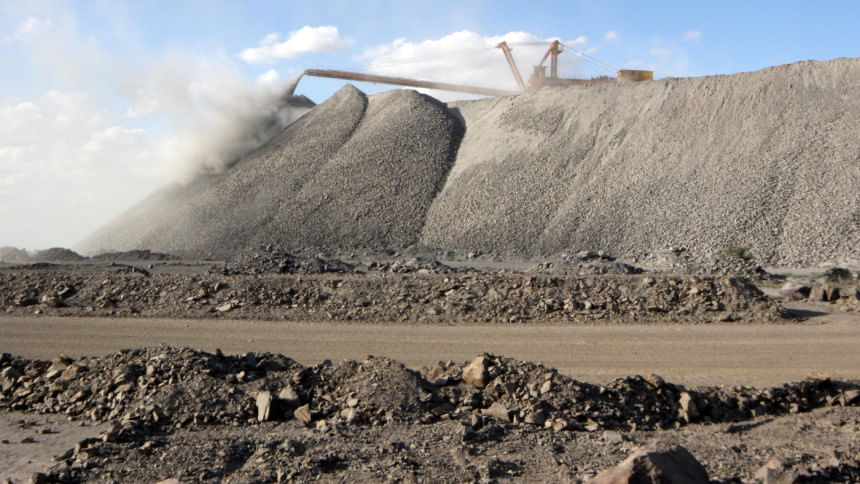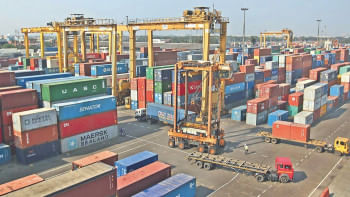China’s strategic edge as rare minerals emerge as a geopolitical currency

In a world increasingly driven by technology and green energy, a seemingly obscure group of 17 metallic elements known as rare earths has quietly become one of the most critical resources on the planet. From smartphones and computers to electric vehicles and advanced military hardware, these elements are the invisible enablers of modern life. Yet, despite their name, their scarcity isn't due to a lack of abundance within the Earth's crust, but rather the rarity of economically viable concentrations needed for mining and processing.
In a stunning display of strategic foresight on one side and a complete lack of it on the other, the global rare earth market has become a high-stakes game of Monopoly, where one country holds all the winning cards—that is China. While the rest of the developed world was busy outsourcing its manufacturing and bemoaning the environmental impact of digging up obscure minerals, China was quietly cornering the market on the very materials that power our "green" future and our "smart" gadgets.
The story of China's rare earth dominance is a masterclass in long-term planning, contrasted with the West's penchant for short-term profits. Back in the 1980s, while Western nations like the US were struggling to keep mines like California's Mountain Pass open because they were too costly and messy, China's then leader Deng Xiaoping famously declared, "The Middle East has oil; China has rare earths." It was a quote that should have been a screaming headline, but instead, it was treated like a footnote.
And so, China went to work. It poured state money into developing the complex and often dirty process of separating and refining these 17 elements. The result? Today, China doesn't just dominate mining; it controls an overwhelming majority of the world's processing capacity. The West, in its infinite wisdom, happily bought the raw materials from China and then, for a truly mind-boggling second act, shipped them back to China for processing.
This near-monopoly extends beyond just light rare earths; China controls a staggering portion of the refining for the heavy rare earths like dysprosium and terbium, which are essential for high-performance magnets that can operate at high temperatures. In terms of global production, while its share of mining has fluctuated, China still accounted for an impressive 70 percent of global production of rare earth minerals in 2023. Other producers, such as the US (11.6 percent in 2024) and Myanmar (7.97 percent in 2024), play a role but they lack the comprehensive processing infrastructure that China has built over decades.
So, why did the world become so dependent on these materials? Rare earth elements have unique magnetic, fluorescent, and catalytic properties that make them indispensable in much of modern technology. For instance, the element neodymium is a key ingredient in the world's strongest permanent magnets, which are essential for the compact, powerful motors in electric vehicles (EVs) and the massive generators in wind turbines. These magnets have enabled both the miniaturisation of technology and the efficiency of clean energy.
Lanthanum, on the other hand, is used to make lenses in phone cameras distortion-free, while yttrium and europium phosphors create the vibrant colours on LED screens. As the global push for a sustainable future accelerates, so too does the demand for these elements. From guided missiles and fighter jets to advanced radar and sonar systems, rare earths are crucial for military hardware, too. The US Department of Defense has identified this dependency as a critical national security risk.
The irony is that as the West championed the shift to a green economy, it was simultaneously strengthening China's control over the very materials needed for that transition.
Fast forward from the trade war under the Trump administration, where China first floated the idea of restricting rare earth exports as its ace up its sleeve. That threat is no longer theoretical. In December 2023, Beijing moved beyond rhetoric and officially banned the export of technologies used to process rare earths and create high-performance magnets. This move was the equivalent of not just threatening to turn off the power to Silicon Valley and the Pentagon, but actually handing out schematics for a new lock while holding the only key. The message was clear: while the US might have the biggest military budget, a guided missile is just a very expensive paperweight without its rare earth magnets.
So, what happens as this geopolitical game escalates? The immediate fallout of a full supply-chain squeeze would be a full-blown industrial crisis. Electric vehicle manufacturers, wind turbine companies, and defense contractors would be scrambling for a non-existent supply. Prices would skyrocket, production would grind to a halt, and the transition to a greener economy would look less like a smooth glide and more like a crash landing. In a worst-case scenario, it could cripple key industries, undermine national security, and force a chaotic scramble for alternative sources.
The good news is, the wake-up call has been heard. The bad news is, it's a very, very late wake-up call. The US and its allies are now in a frenzied race to build their own rare earth supply chains. This has sparked a global hunt for new deposits, leading to significant recent discoveries. In early 2023, Sweden announced the discovery of Europe's largest known deposit of rare earths, and in mid-2024, an even larger deposit was confirmed in Norway, potentially capable of meeting a significant portion of Europe's demand for decades. Similar large-scale deposits are being explored in Wyoming in the United States.
Policy is also finally catching up. The EU has enacted its Critical Raw Materials Act, setting ambitious targets to mine and process more of its own strategic minerals by 2030. The US Department of Defense is now directly funding the construction of processing facilities on American soil to break the Chinese stranglehold.
More interestingly, a quiet revolution is brewing in research and development. Scientists are working furiously to find substitutes for rare earths, particularly for permanent magnets. Promising materials like iron nitride and manganese-based compounds are being explored, offering the tantalising possibility of magnets made from abundant, cheap elements. A crucial and growing field is the effort to reclaim rare earths from e-waste; advanced recycling techniques are being developed to efficiently extract these valuable elements from old hard drives, electric motors, and batteries. The long-term hope is to "design out" the need for these elements altogether.
However, moving from a mineral discovery or a lab prototype to industrial-scale production is a long, arduous process that can take a decade or more. For the foreseeable future, the world remains largely at China's mercy. While the West is finally putting its mind and money into solving this problem, it's a testament to China's decades-long strategy that the world is only now starting to play catch-up. The rare earth elements may be tiny, but their story is a monumental lesson in how a simple group of materials can upend global power dynamics.
Hussain A Samad is a consultant at the World Bank in Washington, DC, and an independent researcher. He can be reached at [email protected].
Views expressed in this article are the author's own.
Follow The Daily Star Opinion on Facebook for the latest opinions, commentaries and analyses by experts and professionals. To contribute your article or letter to The Daily Star Opinion, see our guidelines for submission.

 For all latest news, follow The Daily Star's Google News channel.
For all latest news, follow The Daily Star's Google News channel. 






Comments